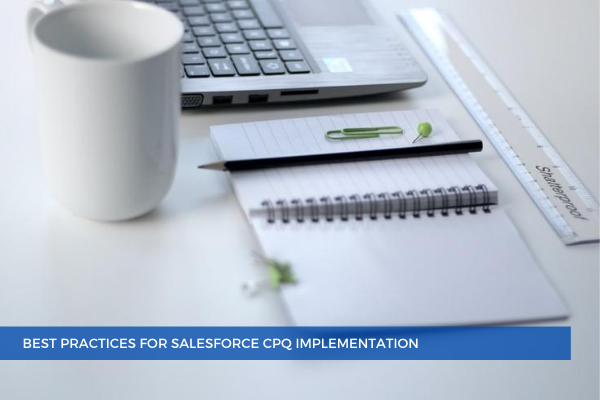
22
JulCPQ tools help companies easily and effectively streamline accurate quotes, which are essential for winning deals in a competitive and complex selling space. Many of the best practices outlined below are designed to help you save time and frustration.
1. Best Practices related to Salesforce CPQ Installation
- Install for ALL USER- this installation ensures access for the necessary objects that are available when a license is given to a particular group of users.
- When you have the privilege of starting on a new development project, update the Sandboxes from Production org.
- After installation is complete, Authorize new calculation service from the configuration settings.
- If the status is "Failed" run Post Install Scripts. If the situation is not resolved, contact the appropriate Salesforce resource for support.
2. Best Practices related to General Development
- More recent attention has been focused on General Development, which is necessary to obtain clear data accepted on the product catalog.
- A good product load with Product Codes, Product Family, Sub-Families, and other descriptions and categorization information will be the basis of the rest of the implementation.
- Bundles/ Configuration must be enforced after loading and defining the products.
- After setting the prices at the end of the configuration, the products, the configuration and the prices are well defined, the Guided Selling, the Approvals, the estimate model and the Renewals / modifications can be performed in parallel.
- Finally, try to use CPQ functionality first (Auto-mapping, Price Rules, Product Rules, Summary Variables, etc. instead of Flows, Process Builder, Apex, etc.)
3. Best Practices related to Product Catalog
- The Product Catalog should contain the extract of a product as detailed as possible and as soon as possible. In addition, it is essential to understand what attributes are needed to define and find a product in the catalog.
- Whether there are products with the same name but have quantity or term lengths associated with them, check whether they can be eliminated with discount schedules or block pricing.
4. Best Practices related to Configuration / Product Setup and Pricing
- You have to set up Configuration Rules to have Product Rules associated to bundles.
- When using Lookup Queries try to minimize the amount of queries related to a price rule.
Example: if you are querying a table to find a price based on product name, currency, and account type, instead of creating 3 queries related to the price rule, create formula fields (one on the quote line and one on the lookup object that combines these 3 values (these will be the 'keys' to fit in the query), and then create a single lookup query matching those fields.
5. Best Practices related to Approvals (Advanced)
- In case you want to display different information for different approvals, separate email templates can be associated with specific approval rules.
6. Best Practices related to Quote Templates
- Use Quote Terms when criteria for exposing a dynamic term needs a summary variable or multiple conditions.
- Remember about possible "breaks" in HTML code when pasting into the WYSIWYG editor. In addition, it is essential to check the source first and then paste into the editor. Make sure that the HTML tags are properly formatted and that HTML inserts don't interrupt any merge fields.
7. Best Practices related to Deployment
- While licenses are not required in Sandboxes, they are needed in production organizations. You will need to make sure that the users have a CPQ permission set licenses after deploying in Production.
- Beware, you cannot add managed components to a Change Set.
8. Best Practices related to Process
A good understanding of the process is the secret to progressing well. Here are some tips:
- Calculate MCV/ACV and synchronize to opportunity products with twin fields and workflows to create ACV opportunity value
- Use List Renewal Method and price rules to build a more flexible renewal pricing method with Same and/or Uplift
- Use virtual bundles to improve product selection
- Use record types to provide a type of record locking for SBAA
- Make sure you differentiate between products configured as assets, subscriptions, one-time subscriptions
- Use price rules to achieve an unprorated subscription.
- Enable Multi-currency to ensure that the product and price automation works with all of the currencies.
- Choose Enable Asset Upgrades in your line editor package settings in order to substitute an asset with another asset from within the quote line editor. This functionality is helpful for processing upgrades.
Adopt a new business tool to generate accurate quotes for customers- especially in complex sales transactions.
Good Luck! :)
Comments (0)